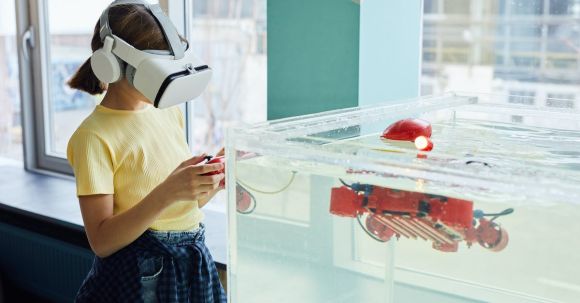Virtual reality (VR) has come a long way since its inception. What was once seen as a futuristic concept is now becoming increasingly accessible and immersive. With technology advancing at a rapid pace, new developments in virtual reality are constantly emerging. From improved hardware to innovative applications, let’s take a closer look at some of the exciting advancements in the world of virtual reality.
Enhanced Hardware for a more Immersive Experience
One of the key areas of development in VR is the hardware that enables users to fully immerse themselves in virtual environments. Manufacturers are continually pushing boundaries to create more realistic and comfortable headsets. The latest VR headsets offer high-resolution displays, wider fields of view, and improved tracking technology. These advancements result in a more lifelike experience, allowing users to feel fully present in the virtual world.
Wireless VR for Increased Freedom of Movement
Another significant development in VR is the move towards wireless technology. Traditional VR systems require users to be tethered to a computer or gaming console, limiting their freedom of movement. However, recent advancements have made wireless VR a reality. Wireless headsets and accessories, such as wireless adapters, enable users to move around without being constrained by cables. This development not only enhances the user experience but also opens up new possibilities for VR applications in various industries.
Social VR for Connected Experiences
Virtual reality has often been viewed as a solitary experience, but that perception is changing with the emergence of social VR. Social VR allows users to interact with others in virtual environments, creating a sense of shared presence and collaboration. With the advancement of social VR platforms, users can meet and communicate with friends, attend virtual events, and even work together on projects. This development has the potential to revolutionize the way we connect and collaborate with others, making VR a more social and inclusive experience.
VR in Education and Training
Virtual reality is also making its way into the education and training sector, offering immersive and engaging learning experiences. VR simulations can provide students with hands-on training in various fields, such as medicine, engineering, and aviation. For example, medical students can practice surgeries in a virtual operating room, allowing them to gain practical experience in a safe and controlled environment. This application of VR not only enhances learning but also reduces costs associated with traditional training methods.
AR and VR Integration
Augmented reality (AR) is another technology that is emerging alongside VR. AR overlays digital information onto the real world, whereas VR creates entirely virtual environments. However, there is a growing trend towards integrating AR and VR to create mixed reality experiences. This integration allows users to interact with virtual objects while still being aware of their surroundings. The combination of AR and VR opens up new possibilities for gaming, design, and other creative applications.
The Future of Virtual Reality
As VR continues to evolve, the possibilities for its application are seemingly endless. From entertainment and gaming to healthcare and education, virtual reality is transforming various industries. With ongoing advancements in hardware, software, and applications, VR is becoming more accessible, immersive, and versatile.
Conclusion
The development of virtual reality is a testament to the rapid progress of technology. Enhanced hardware, wireless capabilities, social VR, and integration with AR are just a few of the exciting developments in this field. As virtual reality continues to evolve, it will undoubtedly shape the way we work, learn, and interact with the world around us. Whether it’s exploring new virtual worlds or revolutionizing training and education, the future of virtual reality is full of endless possibilities.
